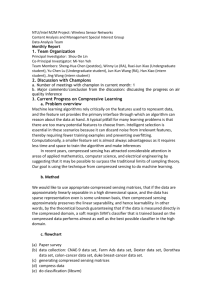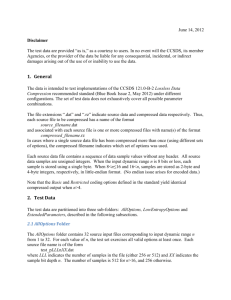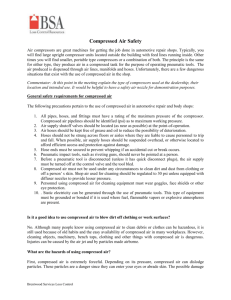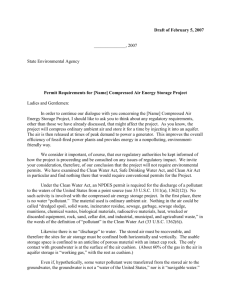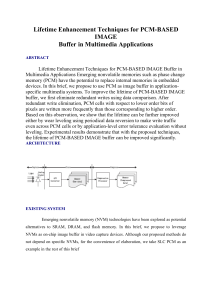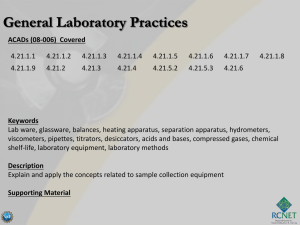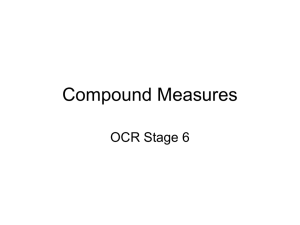SPRING PROBLEMS
advertisement
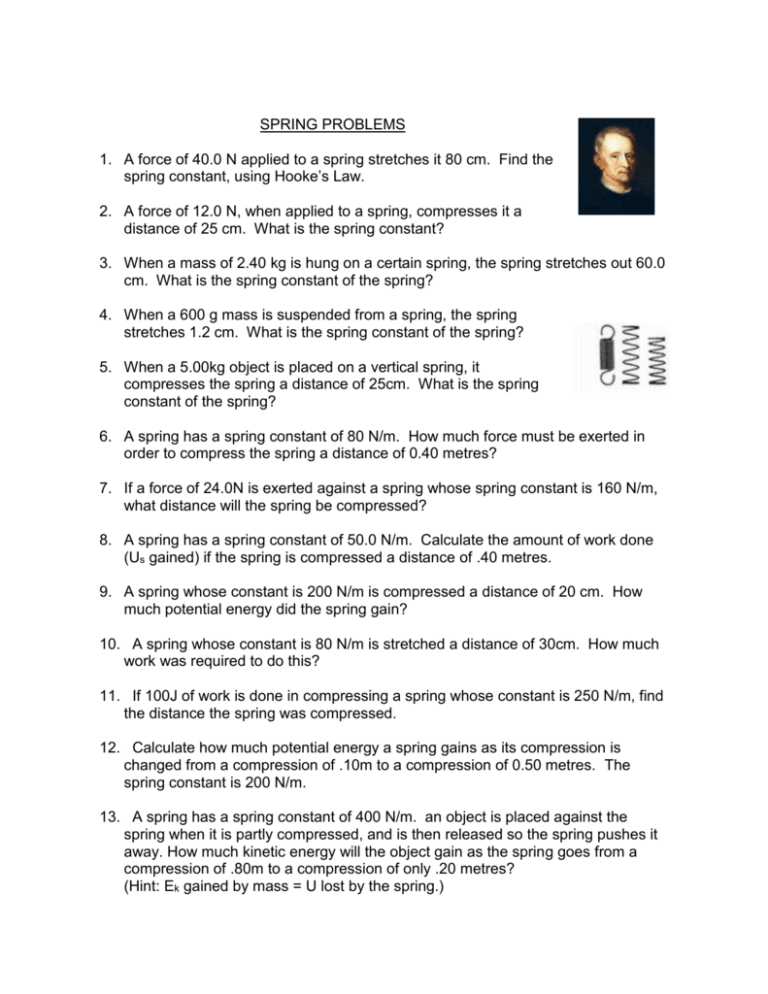
SPRING PROBLEMS 1. A force of 40.0 N applied to a spring stretches it 80 cm. Find the spring constant, using Hooke’s Law. 2. A force of 12.0 N, when applied to a spring, compresses it a distance of 25 cm. What is the spring constant? 3. When a mass of 2.40 kg is hung on a certain spring, the spring stretches out 60.0 cm. What is the spring constant of the spring? 4. When a 600 g mass is suspended from a spring, the spring stretches 1.2 cm. What is the spring constant of the spring? 5. When a 5.00kg object is placed on a vertical spring, it compresses the spring a distance of 25cm. What is the spring constant of the spring? 6. A spring has a spring constant of 80 N/m. How much force must be exerted in order to compress the spring a distance of 0.40 metres? 7. If a force of 24.0N is exerted against a spring whose spring constant is 160 N/m, what distance will the spring be compressed? 8. A spring has a spring constant of 50.0 N/m. Calculate the amount of work done (Us gained) if the spring is compressed a distance of .40 metres. 9. A spring whose constant is 200 N/m is compressed a distance of 20 cm. How much potential energy did the spring gain? 10. A spring whose constant is 80 N/m is stretched a distance of 30cm. How much work was required to do this? 11. If 100J of work is done in compressing a spring whose constant is 250 N/m, find the distance the spring was compressed. 12. Calculate how much potential energy a spring gains as its compression is changed from a compression of .10m to a compression of 0.50 metres. The spring constant is 200 N/m. 13. A spring has a spring constant of 400 N/m. an object is placed against the spring when it is partly compressed, and is then released so the spring pushes it away. How much kinetic energy will the object gain as the spring goes from a compression of .80m to a compression of only .20 metres? (Hint: Ek gained by mass = U lost by the spring.) 14. A spring has a spring constant of 200 N/m. A 10.0kg object travelling at 5m/s strikes the spring. a.) Calculate how far the spring will be compressed before the mass is brought to rest. b.) What is the velocity of the mass when the spring is only compressed 0.40 metres? 15. A 3.00kg mass travelling at 2.00m/s strikes a spring which has a spring constant of 100 N/m. Find: a.) Ek of the moving mass before the collision b.) Ek of the moving mass when the spring has been compressed 0.10 metres. c.) Velocity of the moving mass when the spring has been compressed 0.20 metres. d.) What distance will the moving mass compress the spring before being brought to rest? 16. A 2.00kg mass, moving with a velocity of 5.00m/s strikes a spring which is fastened to a wall. The spring constant is 200 N/m. Find: a.) Total energy before the collision b.) Ek of the mass when the spring has been compressed .20 metres. c.) Velocity of the mass when the spring has been compressed .40 metres. d.) What distance is the spring compressed before the mass is stopped? 17. “K” of spring = 80 N/m. Find: a.) total energy before collision b.) Ek of the mass when the spring has been compressed .40m. c.) Velocity of the mass when the spring has been compressed .60m. d.) Total distance the spring is compressed before the mass is stopped. ANSWERS: 1. U = 50 N/m 2. U = 39.2 N/m 3. U = 40 N 4. U = 490 N/m 5. U = 196 N/m 6. 32 N 7. x = 0.15m 8. 4 J 9. 4 J 10. 3.6 J 11. x = 0.89m 12. 24 J 13. 120 J 14. a.) x = 0.71m b.) U = 4.12 m/s 15. a.) 6 J b.) Ek = 5.5 J c.) U = 1.63 m/s d.) x = 0.35m 16. a.) 25J b.) Ek = 21J c.) U = 3 m/s d.) x = 0.50m 17. a.) 32J b.) 25.6 J c.) U = 2.97 m/s d.) x = 0.89m
